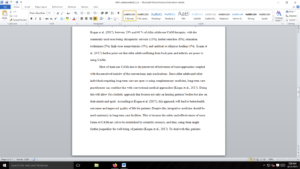Addiction Treatment Case Studies
complete a substance use history table, a diagnostic criteria checklist, and assessment analysis for a chosen client.
Introduction
Theories, theories, theories! Explore the different theories and models of addiction. Where does addiction come from? Why does it exist? Now that you are familiar with the DSM-5, what substance use is, and the different models and theories of addiction, learn about how to prevent addiction, how to treat it, and what to do during relapse.
Instructions
Complete the following:
- Addiction Treatment Case Studies.
- In this media, read the synopsis of each person being interviewed and then watch each video interview. Explore each of the case studies, consider each one carefully, and choose one of the four individuals in the videos: John, Roberta, Tommy, or Jessica.
- Help Me! Full Assessment of a Case Study [DOCX].
- Use this worksheet to complete this assessment
Supported by the information in the Addiction Treatment Case Studies media piece, in the Help Me! Full Assessment of a Case Study [DOCX] worksheet:
- Complete the Substance Use History section.
- Complete the Diagnostic Criteria Checklist
- Complete the Assessment Analysis section, using the provided subheadings.
Additional Requirements
Your completed worksheet should meet the following requirements:
- Written communication: Written communication is free of errors that detract from the overall message.
- References: Support your worksheet with your textbook, NAADAC code of ethics, and the DSM-5.
- APA formatting: Resources and citations are formatted according to APA style and formatting. See the Evidence and APA section of the Writing Center for guidance.
- Length: Fill in each space in the Substance Use History and Diagnostic Criteria Checklist tables, then provide complete paragraphs for each subsection of the Assessment Analysis section. Use complete sentences in the Assessment Analysis section, not lists or bullet points.
- Font and font size: Times New Roman, 12 point.
Competencies Measured
By successfully completing this assessment, you will demonstrate your proficiency in the following course competencies and scoring guide criteria:
- Competency 1: Describe the theories and models relevant to the multidimensional aspects of addiction.
- Describe a theory or model of addiction related to the case study.
- Describe the motivation for change of the case study.
- Competency 2: Apply relevant theories and models to current issues in the field of addiction.
- Tools
- Describe the sociocultural factors influencing or affecting the client’s substance use.
- Competency 3: Describe how sociocultural factors influence addictive behavior.
- Diagnose the chosen case study.
- Explain the basis of diagnosis.
- Competency 4: Apply research findings from scholarly literature to current issues in the field of addiction.
- Describe the ethical considerations of confidentiality and appropriate relationships.
- Competency 5: Communicate in a manner that is scholarly and consistent with expectations for professionals in the field of addiction.
- Cite sources using author and year, and provides some reference information required in APA style.
- Communicate clearly with appropriate purpose, organization, tone, and sentence structure with some errors.
Requirements: worksheet
Answer previewThe fact that the use of CAMs, especially those whose safety and effectiveness are yet to be ascertained, can threaten the well-being of patients means that their use in combination with conventional medicine is heavily regulated. For long-term care facilities, ensuring that the strategies they use to facilitate the integration of CAMs and conventional medical approaches adhere to the existing regulations is important (Barcan, 2020). With respect to the recommended strategies, they adhere to existing regulations. This is because these strategies are aligned with the requirements that healthcare professionals should allow patients to be involved in their treatment (Barcan, 2020). By collaborating with patients to discover the most effective and safe CAMs, long-term care facilities will be fulfilling this requirement. These regulations also require health care professionals to consistently improve their knowledge and skills (Barcan, 2020). Therefore by familiarizing themselves with various ethical frameworks to guide their decision-making, health care professionals will be adhering to this requirement.
[1689 Words]
Addiction Treatment Case Studies


